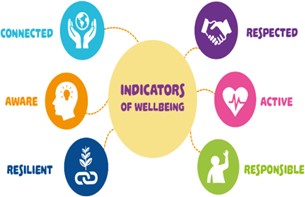Which of the following are included in Johada’s indicators of mental health? (Select all that apply.)
Perception of reality
Love and belonging
Dependency
positive self-thought
Environmental mastery
Correct Answer : A,B,D,E
These are all indicators of mental health. Perception of reality refers to the ability to accurately perceive and interpret the world around us. Love and belonging refer to the need for social connections and relationships. Positive self-thought refers to having a positive self-image and self-esteem. Environmental mastery refers to the ability to effectively navigate and control one’s environment. Dependency is not an indicator of mental health.

Nursing Test Bank
Naxlex Comprehensive Predictor Exams
Related Questions
Correct Answer is A
Explanation
It is important for a client to be included in their treatment plan if possible because it allows them to have a say in their own care and to work together with their healthcare team to set achievable goals and objectives. This can help improve the client’s engagement and motivation in their treatment and can lead to better outcomes.
Correct Answer is A
Explanation
Operant conditioning is a type of learning in which behavior is strengthened or weakened by the consequences that follow it. In this case, the clients are rewarded with opportunities to attend movie night and tokens for the concession area when they have achieved attending and participated in five focused therapeutic group sessions. This reward is intended to reinforce the desired behavior of attending and participating in group sessions.
Whether you are a student looking to ace your exams or a practicing nurse seeking to enhance your expertise , our nursing education contents will empower you with the confidence and competence to make a difference in the lives of patients and become a respected leader in the healthcare field.
Visit Naxlex, invest in your future and unlock endless possibilities with our unparalleled nursing education contents today
Report Wrong Answer on the Current Question
Do you disagree with the answer? If yes, what is your expected answer? Explain.
Kindly be descriptive with the issue you are facing.
